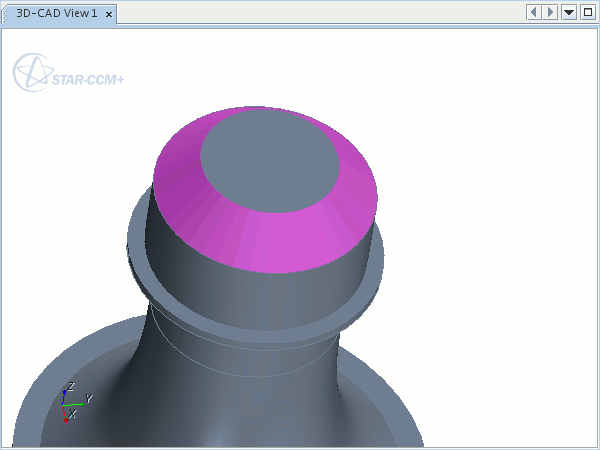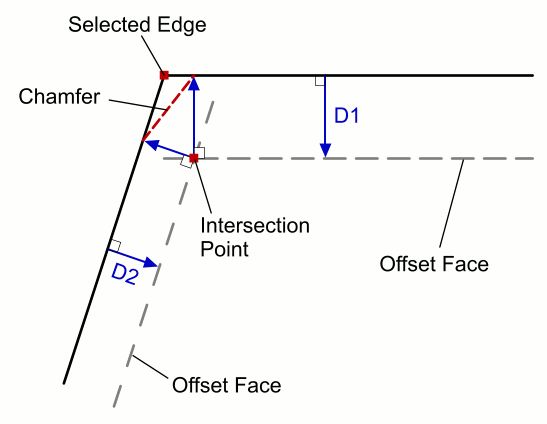What Is a Chamfer?
A chamfer is a feature that makes a straight cut across the corner of a body, resulting in a flat surface.

- Offsets the faces that are adjacent to the selected edge with the specified distances, Distance 1 and Distance 2.
- Finds the point where the two offset faces intersect.
- Projects this point back to the original faces, following the path that is normal to the original faces.
- Creates the chamfer through these projected points.

You can also apply a chamfer to the edges of a selected face. The chamfer tool creates the chamfer for each edge following the same principles as described above.
Applying a chamfer successfully depends on which edges or faces you select, and the size of the chamfer in relation to the model. If you are having difficulty in applying a chamfer, try decreasing the dimensions of the chamfer or selecting fewer edges/faces. In order to solve the model geometry, a chamfer that is applied to a particular entity can extend automatically to include adjacent edges. The chamfer creation process for multiple input edges or faces can be partially successful. If an edge or face with a chamfer fails during the chamfer creation, the failed chamfer on an edge or face is highlighted in red.